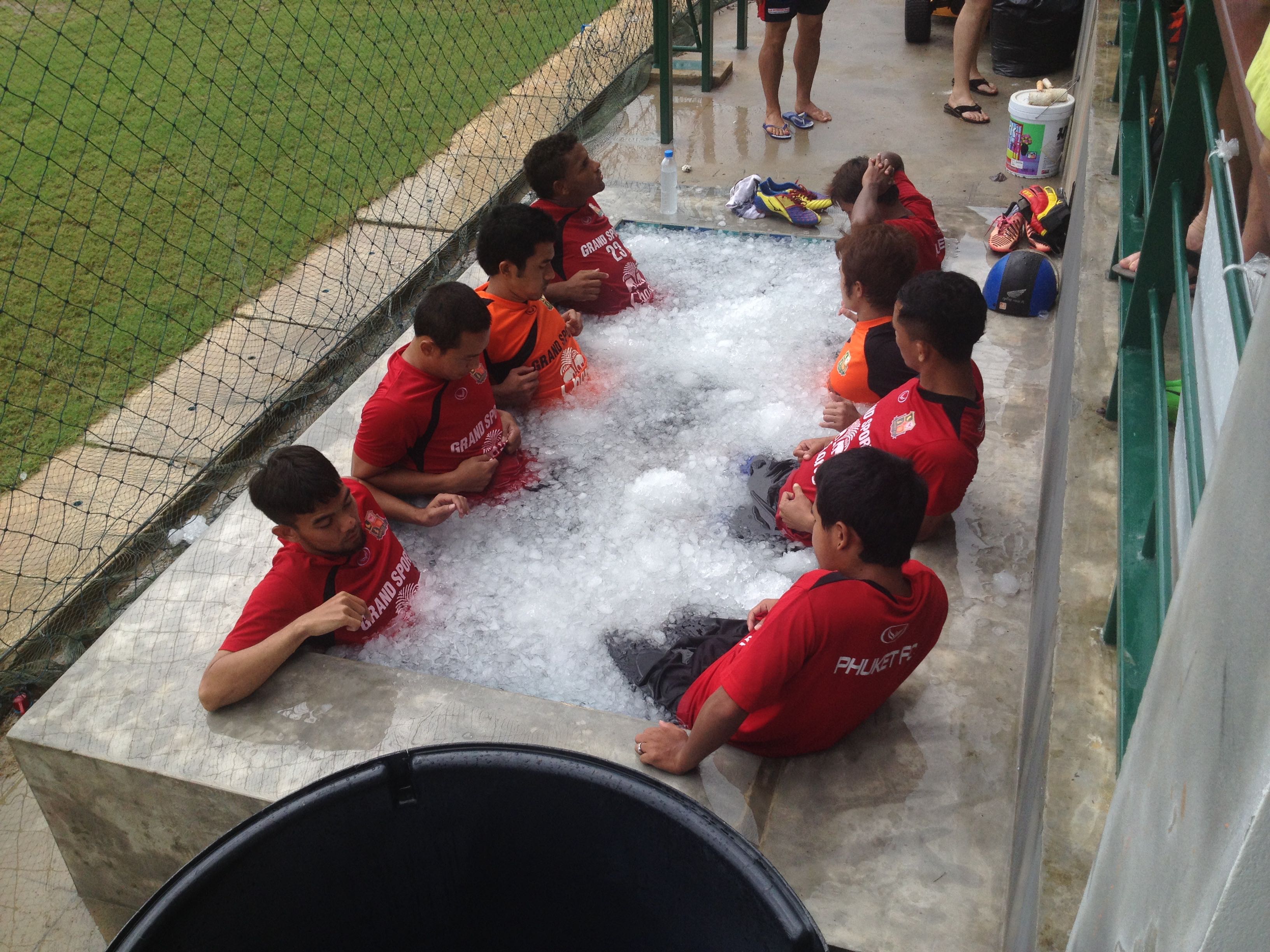No one likes it, right? The idea of plunging a tortured, ageing body into icy waters post game, is enough to send us into cardiac arrest. Yet, it is considered to be a rite of passage in many sports. The greatest test of sporting achievement is often perceived as being time spent in an ice bath.
But what if there was a better way, which provided all the perceived benefits, but without the profound discomfort?

In fact, there is little evidence that ice bathing, or Cryotherapy, has the benefits ascribed to it.
If we believe that the body functions optimally at 37 degrees Celsius, then it makes sense to maintain the core temperature at that level throughout the recovery process. Minimal increases in core temperature during exertion are expected, and, provided adequate hydration and nutrition are maintained, our body systems adjust accordingly. It follows then, that reducing the core temperature with cooling, will quickly return the body to homeostasis, but does that mean exposing the body to temperatures more than 20 degrees below core temperature?
Having been involved in Masters sport for almost two decades, as a therapist, it is my experience that Ice baths do the opposite of what is expected, and in fact, slow down the recovery process. In competition where more than one game is played per day, ice bathing has resulted in decreased performance, increased muscle stiffness and joint pain or discomfort and appears to have no benefit to the players beyond the adrenalin rush of removing a stressor from the body.
We also know from research, that heat, and alternating hot cold plunges are ineffective in reducing recovery time. So, it would appear that extreme ranges provide little value beyond team building benefits – the misery loves company, approach.
What is the ideal recovery plan?
Current thinking is that key ingredients are hydration, nutrition and rest. Of course there is the issue of the niggles or injuries requiring attention.
I will discuss the hydration and nutritional aspects elsewhere, but clearly there remains the need to deal with muscle soreness and how to freshen tired bodies post game. Proving optimal nutrition and hydration has many demonstrable benefits and coupled with warm up and cool down programmes is critical in competition.
Evidence in favour of pool work is strong. We know that water based exercise provides compressive support of around 20 mcg Mercury to muscles, so the equivalent of most commercially available compression garments… without the need to shoe horn yourself into one! This is widely regarded as being the most beneficial level of compression to reduce delayed onset muscle soreness ( or DOMS).
If we subscribe to the benefits of cooling, rather than shocking the body, assisting vasodilation by cooling the surface area slightly provides benefit by immersing in water below core temperature. Tepid, or cool water, at around 27 degrees, is comfortable for players. It provides compression, reduces the core temperature gently, supporting the innate recovery of body systems, without the systemic shock of ice bathing.
Adding warm down stretching, and movements such as walking, and resistance work appears to assist blood flow to large muscle groups, and assisting with recovery.Masters athletes report reduced stress, improved range of movement, and demonstrably less swelling in injured or arthritic regions.
We have found 10 -15 minutes to be effective, whilst longer is enjoyable. In competition this can easily be accomplished between games in most cases.
Does Pool based Recovery reduce Injuries?
The evidence at this stage is anecdotal. As a Sports Trainer/therapist, working at all levels, Nationally and internationally, over almost 25 years, I endorse a no ice policy. A concenus among the cohort I care for is strongly in favour of the cool water approach. It is invariably the case, in cricket, soccer and wheelchair sport that I have worked with, that the players carry fewer injuries, recover more quickly, demonstrate a greater range of motion, and enjoy the pool work.
At Masters level particularly, trainer/therapists are often dealing with chronic, long term issues, with resultant biomechanical or compensatory patterns entrenched in nature. Our role is clearly restricted to dealing with what we can influence in the time available. Teaching pool work allows players a take home approach. This is clearly an easy form of management with high compliance.
Conclusion
Ice bath is counter intuitive to all players at Masters level and beyond, compliance is difficult as a consequence. Tepid pool work however, has demonstrable benefits, and high compliance levels. It can be used multiple times a day, is inexpensive and simple to facilitate. It can be as simple as walking in chest deep water, or as complex as a full warm down routine.
Players report feeling fresher, and particularly, lighter in the legs, post session. Invigorated, recharged and relaxed bodies perform better in competition, and the teams that consistently employ this approach are definitely less injury prone.
Masters athletes, generally require more therapy, are more body aware, but also less likely to request treatment, toughing through their aches and pains, so pool work helps those players and adds a self-administered therapy to their tournaments.
Are the benefits sufficient to change the culture of your team?
You be the judge.